
We are currently under constructionBeLeafInRudolph
She’s the tattooed plant queen, he’s a gentle giant.
Rares, uncommons, weirdos & the classics.Ask us your plant Q’s! We’ve got answers & dad jokes.
Join us on PalmStreet for our next LIVE chat, auction, and FREE giveaways!October 27 @ 5:30 EST
Blog Posts
These blogs may contain affiliate links. If you buy through them, I may earn a commission at no extra cost to you.
Top 10 Tropical Plants for Beginners
w/ Care Sheets
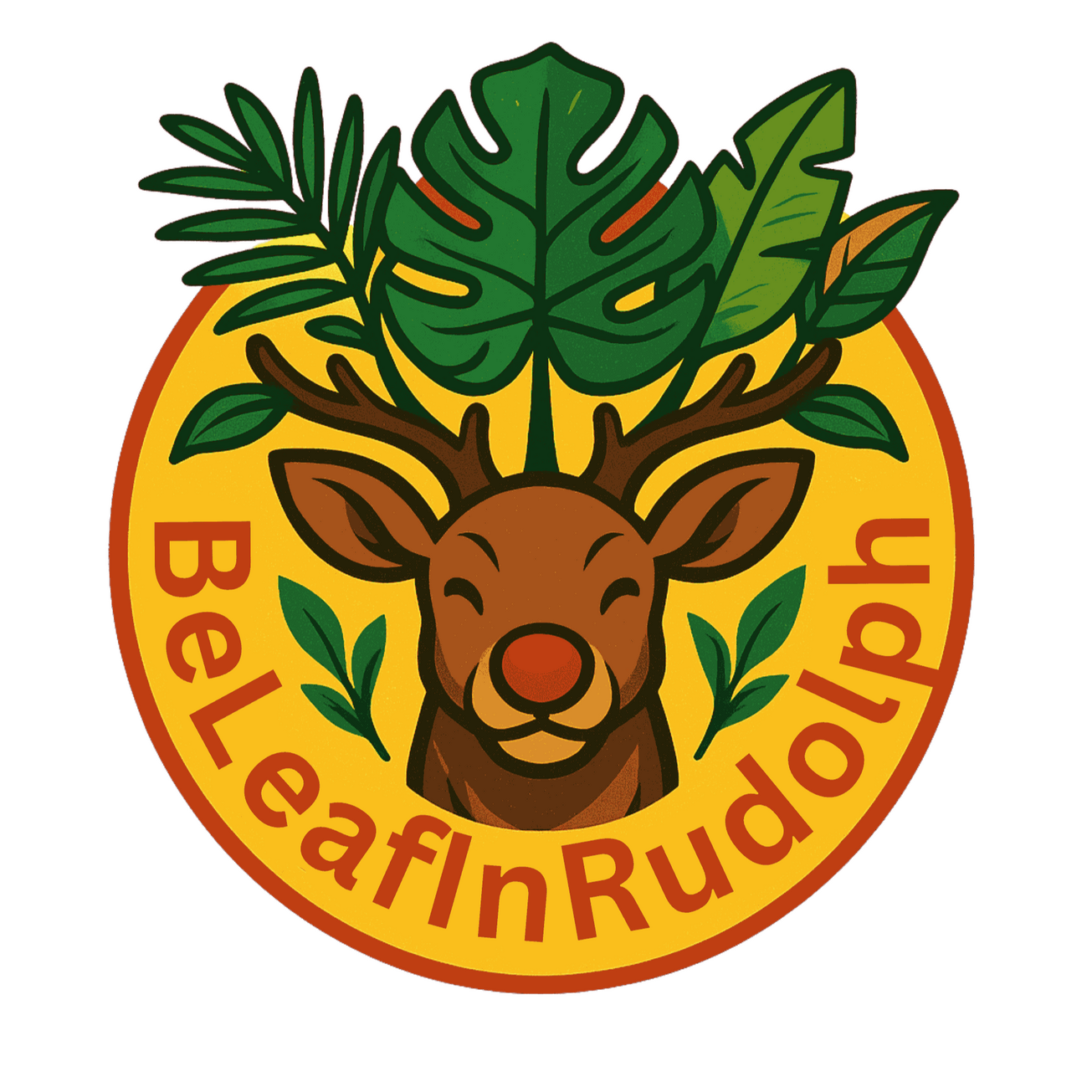
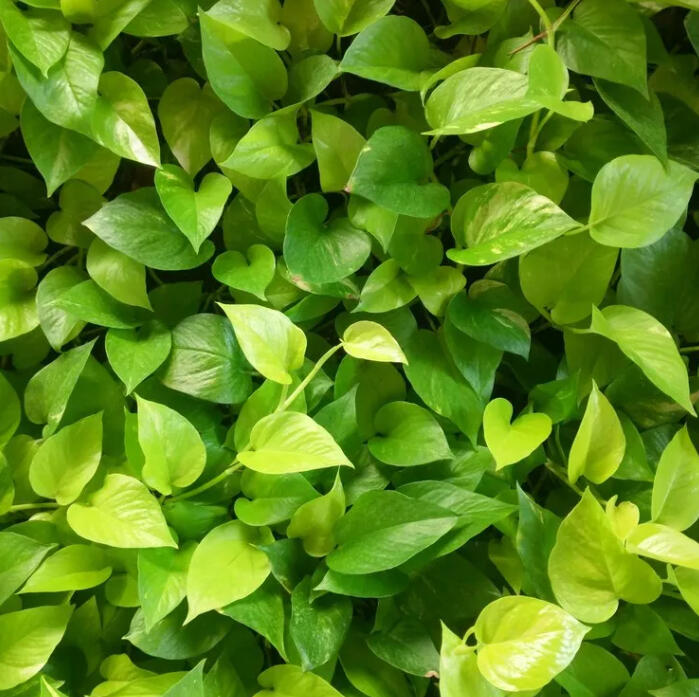
#1 - Golden Pothos – Beginner Care Sheet
• Light: Low to bright indirect light
• Water: Allow top 2 inches of soil to dry between waterings
• Humidity: Average home humidity; tolerant of dry air
• Fertilizer: Feed monthly with balanced liquid fertilizer during growing season
• Beginner Tip: Very forgiving; great for hanging baskets or training on trellises
🌱 Upgrade Cultivar Tip: Manjula or Marble Queen Pothos – slower growing, needs more light to retain variegation

#2 - Heartleaf Philodendron –Beginner Care Sheet
• Light: Low to medium indirect light
• Water: Water when the top 1–2 inches of soil are dry
• Humidity: Moderate; appreciates extra humidity but tolerates average levels
• Fertilizer: Fertilize every 4–6 weeks in spring and summer
• Beginner Tip: Extremely easy to grow; vines quickly and can be trained
🌱 Upgrade Cultivar Tip: Philodendron ‘Brazil’ or ‘Rio’ – slower and more sensitive, needs brighter light
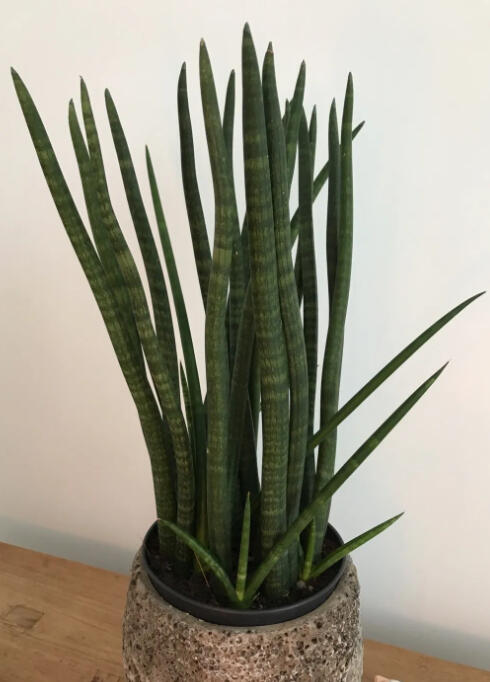
#3 - Snake Plant – Beginner Care Sheet
• Light: Low to bright light; avoid direct sun
• Water: Water only when completely dry (every 2–4 weeks)
• Humidity: Tolerates dry air well
• Fertilizer: Feed sparingly every 2–3 months in growing season
• Beginner Tip: Tough and drought-tolerant; ideal for neglectful plant parents
🌱 Upgrade Cultivar Tip: Moonshine or Whale Fin – needs brighter light, slower growth
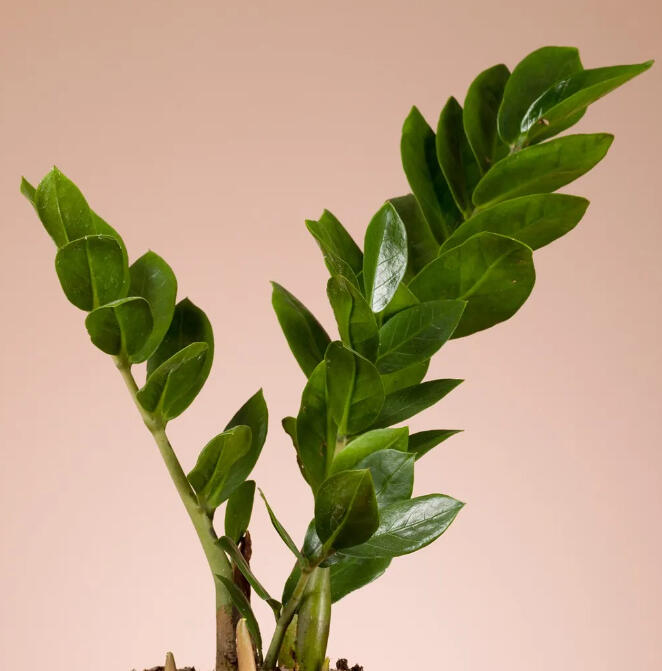
#4 - ZZ Plant – Beginner Care Sheet
• Light: Low to bright indirect light
• Water: Water every 2–3 weeks; allow to fully dry between waterings
• Humidity: Average humidity; not fussy
• Fertilizer: Feed lightly every 2–3 months during growing season
• Beginner Tip: Very low-maintenance; ideal for low light homes or offices
🌱 Upgrade Cultivar Tip: ZZ Raven – slower growing, same care with dramatic dark foliage

#5 Spider Plant – Beginner Care Sheet
• Light: Bright, indirect light
• Water: Keep soil slightly moist; let top dry between waterings
• Humidity: Enjoys moderate to high humidity
• Fertilizer: Feed biweekly in spring/summer
• Beginner Tip: Easily produces baby spiderettes for propagation
🌱 Upgrade Cultivar Tip: Bonnie (Curly) – compact, benefits from more humidity and light

#6 Peace Lily – Beginner Care Sheet
• Light: Low to medium light; blooms better with more light
• Water: Water when leaves start to droop slightly
• Humidity: Prefers high humidity; mist regularly
• Fertilizer: Feed every 6 weeks with bloom-boosting fertilizer
• Beginner Tip: Great communicator—wilts when thirsty
🌱 Upgrade Cultivar Tip: Domino – variegated, needs more consistent light and humidity
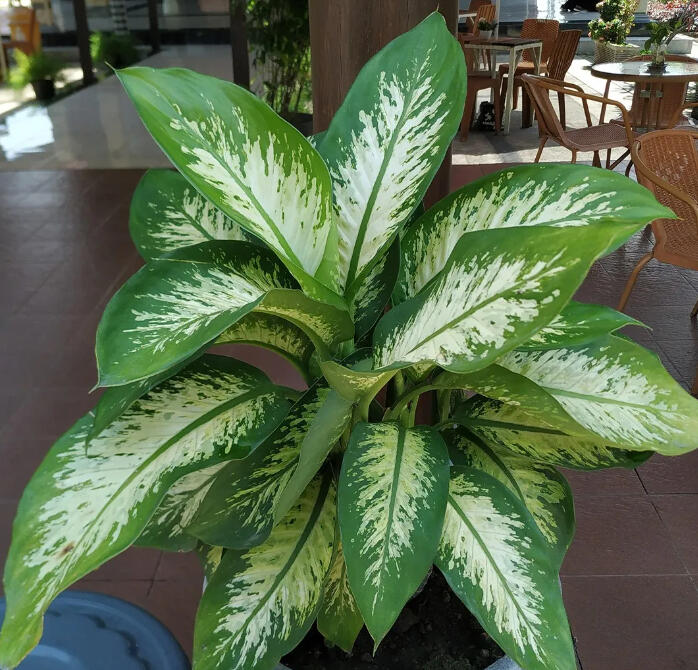
#7 Dieffenbachia – Beginner Care Sheet
• Light: Bright, filtered light
• Water: Keep soil consistently moist but not soggy
• Humidity: Moderate to high humidity
• Fertilizer: Feed every 4–6 weeks during growing season
• Beginner Tip: Rotate regularly for even growth
🌱 Upgrade Cultivar Tip: Reflector or Camille – more sensitive to watering and light changes
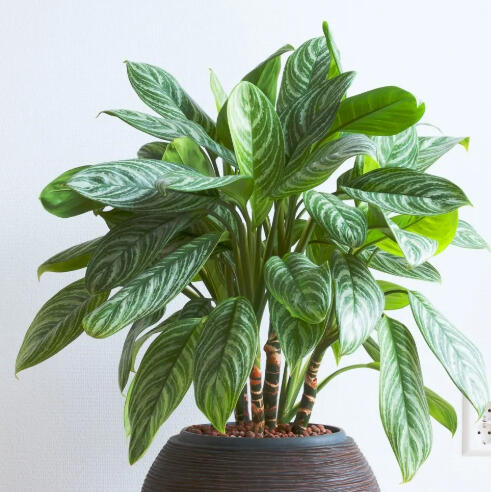
#8 Aglaonema 'Stripe' – Beginner Care Sheet
• Light: Low to medium indirect light
• Water: Water when top 2 inches of soil dry out
• Humidity: Average; appreciates extra humidity for color vibrancy
• Fertilizer: Monthly feeding in spring/summer
• Beginner Tip: Tough and colorful; adapts to various environments
🌱 Upgrade Cultivar Tip: Red Siam or Pink Dalmatian – brighter colors, needs more light

#9 Dracaena – Beginner Care Sheet
• Light: Medium to bright indirect light
• Water: Let soil dry halfway between waterings
• Humidity: Tolerates dry air but prefers moderate humidity
• Fertilizer: Feed every 6–8 weeks in growing season
• Beginner Tip: Sensitive to fluoride—use distilled water if possible
🌱 Upgrade Cultivar Tip: White Jewel or Tornado – more compact, higher humidity preferred

#10 Tradescantia Zebrina – Beginner Care Sheet
• Light: Bright, indirect light
• Water: Keep soil slightly moist; don’t let fully dry out
• Humidity: Loves high humidity
• Fertilizer: Feed every 3–4 weeks during growing season
• Beginner Tip: Pinch back to encourage bushiness and avoid legginess
🌱 Upgrade Cultivar Tip: Nanouk or Tricolor – more vibrant but prone to rot if overwatered
Top 10 Best Tropical Plants for
Low Light Rooms

Tropical plants are often associated with sun-soaked jungles, but not every corner of your home can mimic that level of light. If you're working with a dim bedroom, north-facing office, or a cozy reading nook far from the window, don't worry there are still plenty of lush, vibrant tropical plants that can thrive in low light. The key is choosing the right varieties and adjusting expectations (slower growth, perhaps fewer blooms), while focusing on foliage beauty and resilience.
What is “Low Light,” Really?
Before diving into plant recommendations, let’s define what “low light” means in houseplant terms.
It doesn’t mean no light since very few plants can survive complete darkness.
It refers to areas where: There's no direct sun, and you can comfortably read a book during the day without turning on a light.
Think: several feet away from an east or north-facing window, or rooms with filtered light through sheer curtains.
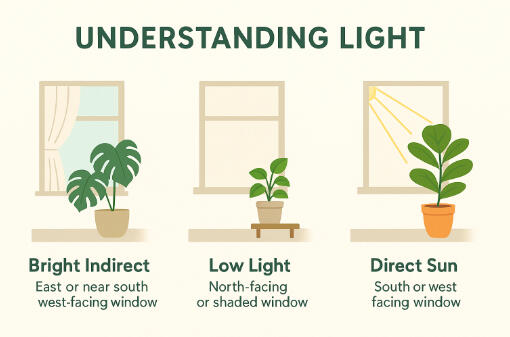
Now, let’s look at some tropical houseplants that do well in these conditions and a few upgraded cultivars for when you're ready to step up your plant game.

🌱 1. ZZ Plant (Zamioculcas zamiifolia)
Why it works: Practically bulletproof. Tolerates neglect, drought, and thrives in low light.
Care Tips: Let the soil dry completely between waterings. Avoid overwatering at all costs.Upgrade Cultivar:
🪴 ZZ Raven – Sleek black-purple foliage with the same easy care.
Difference in care: Same light tolerance, but slower to show new growth. Bright indirect light will help Raven darken faster.

🌱 2. Snake Plant (Sansevieria trifasciata)
Why it works: Thrives on neglect and very forgiving. It adapts to nearly any light level.
Care Tips: Water sparingly, especially in low light. Too much water is a death sentence.Upgrade Cultivar:
🌾 Moonshine Snake Plant – Stunning silver-green leaves for a more designer look.
Difference in care: Slightly more sensitive to overwatering than the standard variety.
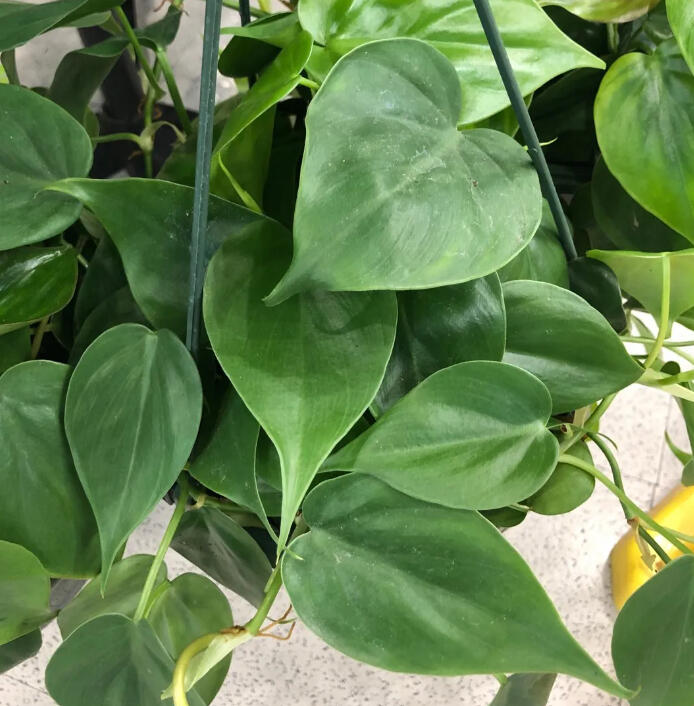
🌱 3. Philodendron hederaceum (Heartleaf Philo)
Why it works: Loves to trail and vine, even in dim corners. It’s a fast grower in most conditions.
Care Tips: Water when top 1–2 inches of soil are dry. Fertilize lightly in spring/summer.Upgrade Cultivar:
💚 Philodendron ‘Brasil’ – Variegated lime and green striped leaves.
Difference in care: Needs slightly brighter indirect light to maintain bold variegation.
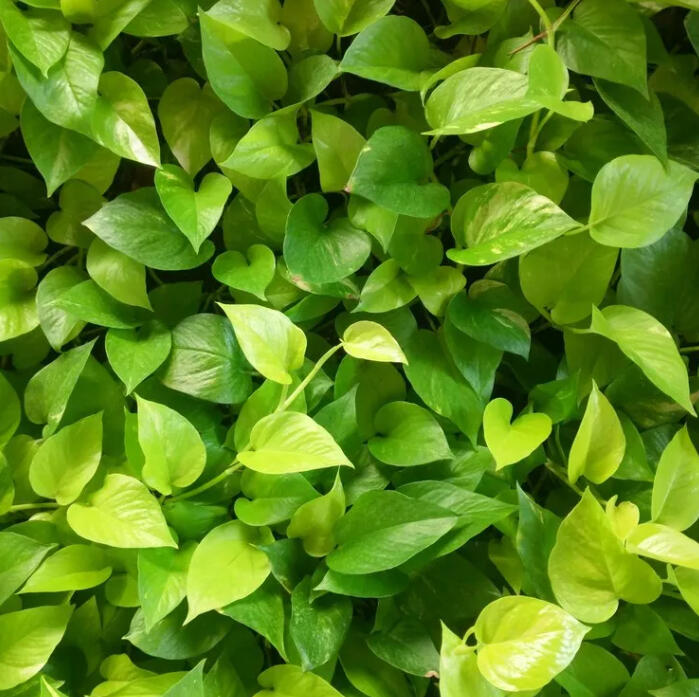
🌱 4. Pothos (Epipremnum aureum)
Why it works: A classic for a reason—adapts to low light but thrives in medium.
Care Tips: Water when soil is dry halfway down the pot. Prune leggy vines to encourage bushier growth.Upgrade Cultivar:
💫 Pothos ‘Marble Queen’ or ‘N’Joy’ – Heavier variegation.
Difference in care: Will revert to green in deep shade. Keep near a bright window (no direct sun) to preserve patterns.
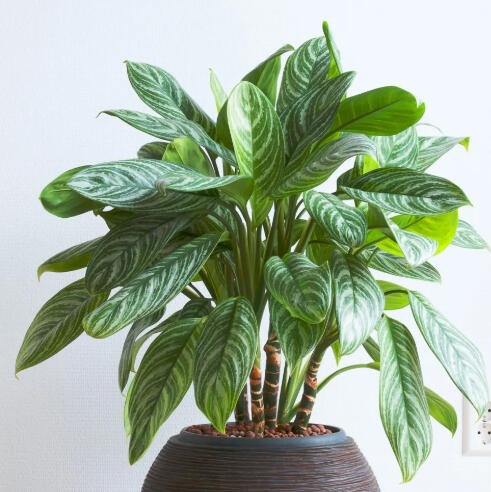
🌱 5. Aglaonema (Chinese Evergreen)
Why it works: One of the few tropicals specifically known for its low-light tolerance and splashy foliage.
Care Tips: Water when the top third of soil is dry. Rotate the pot monthly to prevent leaning.Upgrade Cultivar:
🔥 Aglaonema ‘Red Siam’ or ‘Silver Bay’ – Red or silvery variegation.
Difference in care: Slightly brighter light helps maintain rich colors.
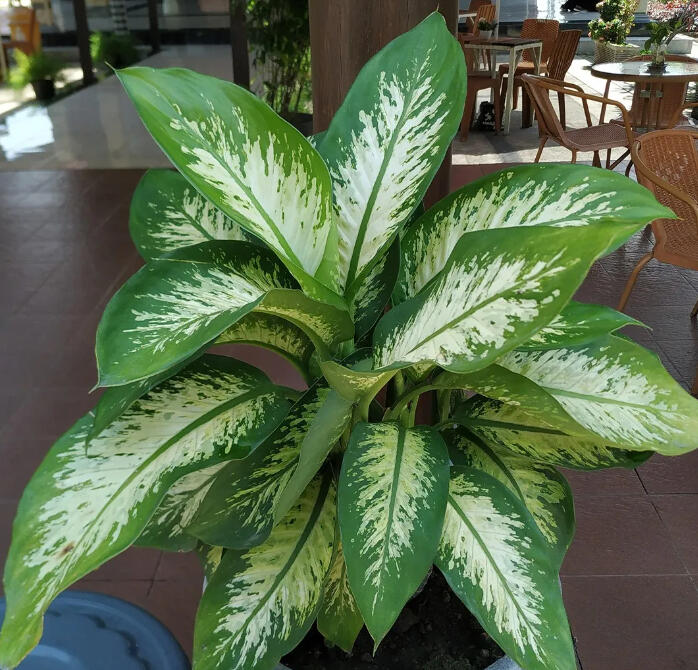
🌱 6. Dieffenbachia (Dumb Cane)
Why it works: Large, dramatic leaves with striking patterns. Happy in medium to low light.
Care Tips: Keep soil lightly moist in the growing season, and slightly drier in winter.Upgrade Cultivar:
✨ Dieffenbachia ‘Camille’ – Light creamy center with green edges.
Difference in care: Like others, it prefers filtered light for vibrant color.
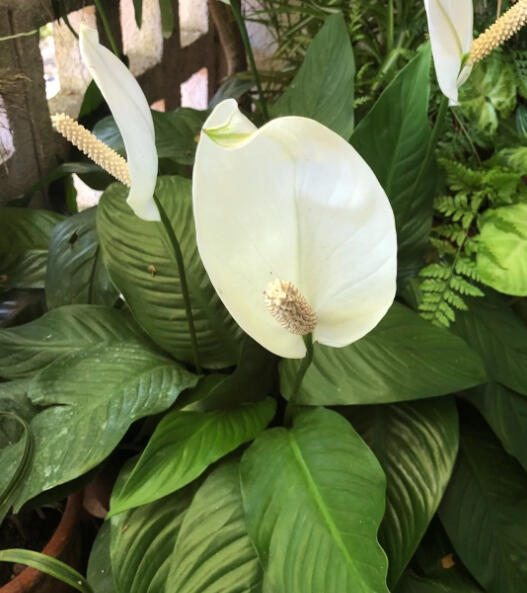
🌱 7. Peace Lily (Spathiphyllum)
Why it works: Thrives in low light and even blooms occasionally in shade. Great air purifier, too.
Care Tips: Loves consistent watering—droops dramatically when thirsty but recovers quickly.Upgrade Cultivar:
🌸 Spathiphyllum ‘Domino’ – Variegated white-streaked foliage.
Difference in care: Needs more consistent moisture and slightly brighter light for variegation.

🌱 8. Hoya (especially H. carnosa & H. pubicalyx)
Why it works (surprise!): Hoyas are often thought of as sun lovers, but many species adapt well to low indirect light, just with slower growth and fewer flowers.
Care Tips: Let dry out between waterings. Bright light = blooms, but they survive happily without them.Upgrade Cultivar:
🌺 Hoya ‘Krimson Queen’ – Pink-tinged variegated leaves.
Difference in care: Needs more light to keep the variegation and pink tones strong.

🌱 9. Calathea (Goeppertia)
Why it works: Prefers low, filtered light—too much light can scorch the leaves. Loves humidity.
Care Tips: Use distilled water, keep humidity high, and avoid letting it dry out completely.Upgrade Cultivar:
🎨 Calathea ‘White Fusion’ – A stunning but more temperamental variant.
Difference in care: Requires very high humidity and filtered water; prone to crispy edges.

🌱 10. Parlor Palm (Chamaedorea elegans)
Why it works: Classic Victorian houseplant for a reason. Happy in low light and doesn’t require much fuss.
Care Tips: Let topsoil dry out between waterings. Doesn’t love being repotted often.Upgrade Cultivar:
🌿 Cat Palm (Chamaedorea cataractarum) – Similar look, bushier habit.
Difference in care: Needs more frequent watering and brighter light to thrive.
💡Final Tips💡
Low Light Tropical Care
Avoid overwatering: Plants in low light use less water.
Wipe leaves monthly: to help maximize light absorption.
Use grow lights: for really dim rooms.
Turn plants every couple of weeks: This avoids leaning plants.
Dark corners: Add a small mirror to bounce light!
Bonus: Amazon-Recommended Low Light Helpers
🪴 Grow light for shelves or low-light desks:
🌡️ Soil moisture meter (great for low-light plants prone to overwatering):
💧 Humidifier for fussy foliage lovers:
BLOG POST TITLE
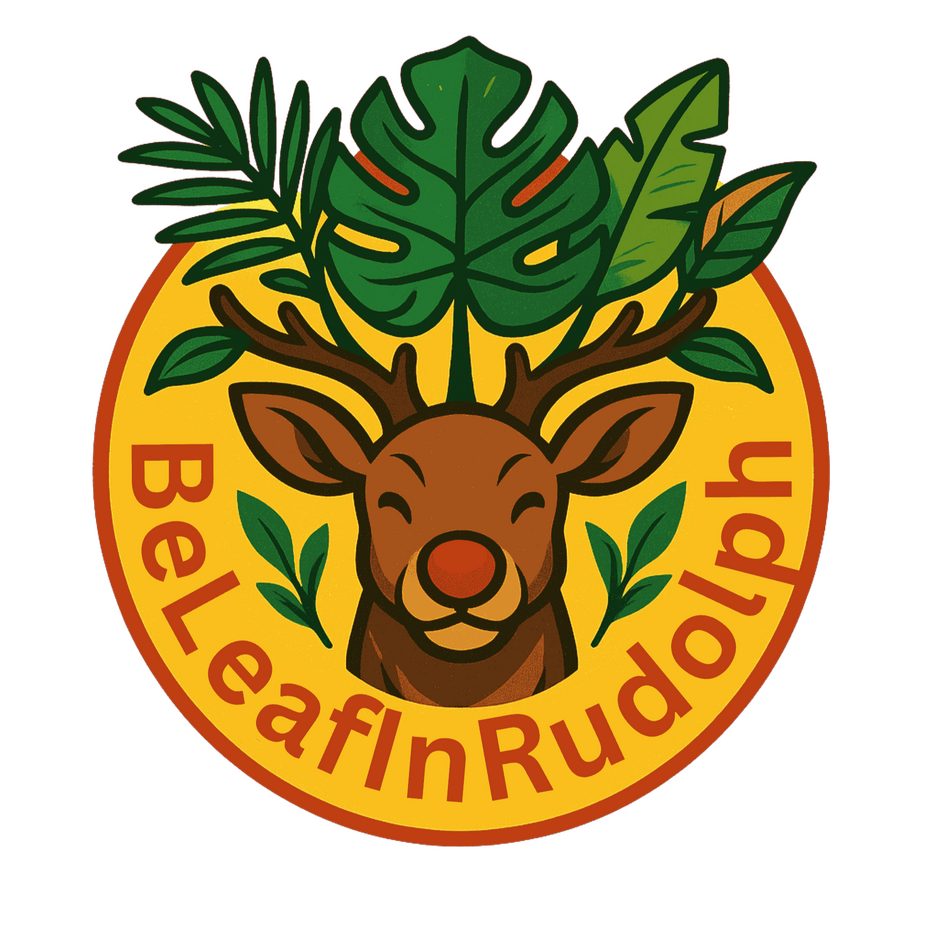
Blog Text Body
BLOG POST TITLE

Blog Text Body
BLOG POST TITLE

Blog Text Body
BLOG POST TITLE

Blog Text Body
BLOG POST TITLE

Blog Text Body
Water Quality
&
Its Effects on Houseplants

Tap Water vs. Distilled vs. Rainwater vs. Filtered: What’s Best for Your Plants?
You’ve picked the perfect pot, the ideal soil mix, and found just the right spot by the window. If you’re still watering your beloved tropical houseplants straight from the tap without a second thought you could be sabotaging all your good intentions. Not all water is created equal, and the quality of water you use can have a major impact on the long-term health of your plants.
Let’s break down the different water types, what they contain (or don’t), and how they affect your tropical green companions (especially sensitive ones like Calatheas, Alocasias, and Hoyas).Tap water is easily accessible and convenient, but it often contains chlorine, fluoride, and other dissolved minerals that can accumulate in the soil over time. While many houseplants can tolerate these additives, more sensitive species may show signs of distress (i.e. browning leaf edges or slowed growth). Hard water areas are particularly notorious for high mineral content, which can cause salt buildup and affect soil pH. For plants that already have fussy root systems or thinner leaves, this type of stress can be enough to halt progress or cause long-term damage.Distilled water, on the other hand, is entirely free of minerals, salts, and chemicals. It provides a neutral and predictable base for watering, making it ideal for delicate or rare tropicals. The downside is that it lacks naturally occurring micronutrients found in other water sources, so it’s best used in conjunction with a well-balanced fertilization schedule. Still, for plant parents dealing with sensitive species like Alocasias or rare Calatheas, it’s often a reliable choice to eliminate water-related guesswork.Rainwater is another excellent option (often considered nature’s perfect formula). It’s soft, slightly acidic, and contains trace organic matter that tropicals adore. Collecting rainwater is also environmentally friendly and cost-effective. Just be sure to use a clean collection system and avoid runoff from chemically treated roofs or gutters. Filtered water falls somewhere in between, removing many harmful contaminants while still retaining some beneficial minerals. For most plant parents, this strikes a healthy balance between convenience and quality (especially when using pitcher-style filters or under-sink systems).
In short, while tap water might be “good enough” for some hardy plants, tropical houseplants, particularly finicky varieties, thrive best with a bit more consideration.Upgrading your water source is one of the easiest ways to improve plant health and prevent mystery problems down the road. Once you’ve dialed in your water quality, you might be surprised at how much happier and more resilient your green friends become.
🚿Tap Water: Convenient, but Is It Safe?
Most common option but often the least plant-friendly.🔬 What’s in It?
Tap water contains minerals like calcium and magnesium (which can be beneficial in small amounts), but also additives like chlorine, chloramine, and sometimes fluoride, which can be harmful over time.❌ Common Issues:
Brown tips on leaves (especially on Calatheas and Spider Plants)
Salt and mineral buildup in soil
Sensitive plants may show stress over time.✅ When It’s OK:
Hardy plants like Pothos, Snake Plants, ZZ Plants, and Philodendrons generally tolerate tap water.
Let it sit out for 24–48 hours to allow chlorine to evaporate (this doesn’t work for chloramine, unfortunately).
💦 Distilled Water: Ultra-Pure but Not Nutrient-Rich
Pure H₂O—no minerals, no additives, no contaminants.🔬 What’s in It?
Nothing. Distilled water is created by boiling water into steam and then condensing it back to liquid. It’s as pure as it gets.✅ Pros:
Great for very sensitive plants like Calatheas, Alocasias, Ferns, and Anthuriums
Eliminates the risk of chemical or mineral burn
No residue left in soil or on leaves❌ Cons:
Contains no beneficial minerals
May lead to nutrient deficiencies over time if used exclusively
Cost and accessibility can be a downside for larger collections🪴Best Practice:
Use for sensitive plants or rotate with filtered/rainwater to prevent deficiency. Always fertilize consistently if using distilled long-term.
🌧️ Rainwater: Nature’s Perfect Drink
Free, soft, and nutrient-rich when collected properly.🔬 What’s in It?
Rainwater is naturally soft and often contains organic matter and trace minerals picked up from the atmosphere — which can benefit plants. It’s the closest thing to what your plants would get in the wild.✅ Pros:
Excellent for all tropical houseplants
Contains trace nutrients
Helps flush excess salts from soil
Gentle pH, usually around 5.5–6.5❌ Cons:
Collection required (barrel, bucket, or rain chain setup)
Urban areas may see pollution in rainwater
Needs to be stored safely to avoid mosquito larvae or algae buildup🪴Pro Tip:
Use a mesh screen or fine cloth to filter before storage. Always use food-safe barrels.
🚰 Filtered Water: A Happy Medium
Cleaner than tap, easier than rainwater, and safer than distilled (nutrient-wise)🔬 What’s in It?
Most filters remove chlorine, chloramine, heavy metals, and sediment while often leaving beneficial minerals behind.✅ Pros:
Removes harmful chemicals and metals
Retains essential minerals (in most cases)
Improves water quality without stripping it bare
Available from pitchers (like Brita), under-sink filters, or whole-house systems❌ Cons:
Not all filters remove fluoride
Filter cartridges need to be replaced regularly
Can still get expensive over time🪴Best Practice:
Use filtered water for mid-sensitive plants like Hoyas, Anthuriums, or Monsteras. Great balance between safety and nutrition.
🧪Quick Comparison Chart🧪
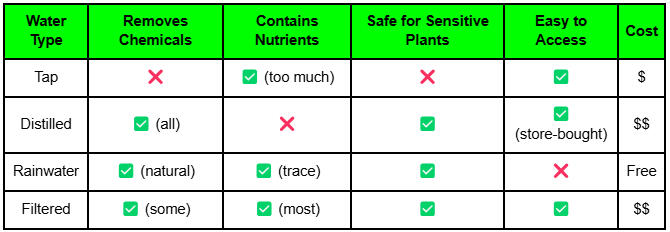
🌿Final Thoughts: What’s Right for Your Plants?🌿
Tap water: only if your plants are hardy, or if you let it sit out overnight (and know your local water quality is decent).
Distilled water: is a safe haven for sensitive species, but don’t forget to supplement.
Rainwater: is a plant’s dream drink... just keep it clean and safe.
Filtered water: strikes the perfect balance for most plant parents: better quality, lower risk, and easy to manage.Still not sure what water to use? When in doubt, filtered or rainwater is usually your best bet.
Understanding Light

🌞Understanding Light🌞
Bright Indirect
vs.
Low Light
vs.
Direct Sun
A beginner’s guide to decoding light levels for happy, healthy tropical plants.
When it comes to caring for tropical houseplants, few things are as misunderstood—or as important—as light. While watering and humidity are crucial, getting the lighting right can make the difference between a thriving plant and one that’s just barely surviving. In this article, we’ll break down the three most commonly used terms: bright indirect light, low light, and direct sunlight. We’ll explain what each one really means, how to measure and provide it, and which tropical plants prefer which type. Photos and visual tips are included to make it super clear.
☀️Direct Sunlight☀️
Definition: Light that comes straight from the sun and lands directly on your plant without passing through curtains, blinds, or being reflected off other surfaces.
Where You Find It: South-facing windows (Northern Hemisphere)Outdoor patios, sunrooms, or window sills with no obstructions
Midday sun between 10 AM – 4 PMPros: Best for cacti and succulents. Encourages fast growth in sun-loving plants. Can trigger blooming in light-hungry species
Cons: Can cause leaf burn in most tropical plants. Dries out soil quickly. Increases plant water and nutrient demandTropical Plants That Can Tolerate Some Direct Sun:
Bird of Paradise
Croton
Banana plants (Musa)
Some Alocasias (e.g., Alocasia ‘Regal Shield’)Tips to Manage It:
Use sheer curtains to soften harsh rays
Rotate plants to avoid sun scorch on one side
Move plants back a few feet from the window during summer
🌤 Bright Indirect Light 🌤
Definition: Sunlight that reaches your plant but is filtered through a curtain, bounced off a wall, or diffused naturally before it hits the leaves.
Where You Find It: East-facing windows (gentle morning sun), near (not in) south or west windows, rooms with skylights, frosted glass, or light-colored walls.Pros: Ideal for most tropical houseplants. Mimics understory jungle conditions. Reduces risk of leaf burn
Cons: Can be tricky to gauge without a light meter. May need adjustment during winter.Tropical Plants That Love Bright Indirect Light:
Monstera deliciosa
Philodendrons
Anthurium
Hoya
Calatheas and Marantas
Peace LiliesTips to Achieve It: Hang sheer curtains or blinds, place plant 2–4 feet away from a bright window and use a white wall or mirror to reflect light into darker corners
🌥 Low Light 🌥
Definition: Indirect light that’s far from any window or filtered through multiple barriers. You can still see without turning on a light during the day, but the space may feel dim.
Where You Find It: North-facing windows, rooms with small or shaded windows, corners or hallways away from window and offices with ambient lightingPros: Great for darker homes or winter months, works for tough and adaptable plants and slower growth means less frequent maintenance
Cons: Slower growth rate, increases the risk of overwatering and limited plant selectionTropical Plants That Tolerate Low Light:
ZZ Plant (Zamioculcas zamiifolia)
Snake Plant (Sansevieria)
Pothos (especially Golden and Marble Queen)
Aglaonema (Chinese Evergreen)
Cast Iron Plant (Aspidistra)Tips to Improve It:
Use grow lights during short winter days, clean leaves regularly to improve photosynthesis and rotate plants to expose all sides to any available light.💡Bonus Tip💡
How to Tell What Kind of Light You Have
Test with shadows: Put your hand between the sun and the surface where your plant would sit.Sharp shadow = direct sun
Fuzzy shadow = bright indirect
No defined shadow = low light
Use a light meter: Inexpensive digital lux meters on Amazon can measure light levels in lux.Direct Sunlight: 40,000–100,000 lux
Bright Indirect Light: 10,000–20,000 lux
Low Light: 500–2,500 lux👉 Amazon Recommendation:
Dr. Meter Digital Light Meter – reliable and budget-friendly
How to Measure Light in Your Home

🌞
How to Measure Light in Your Home
🌞Light Meters, Phone Apps, and the Shadow Test
🌞Simplified🌞
One of the most misunderstood - and one of the most important - parts of plant care is understanding light.
Many beginners rely on vague terms like "bright light" or "low light," but those can be hard to visualize.
How do you really know if a corner is "bright indirect"?
Or if your hallway is truly low light?
Luckily, there are simple, beginner-friendly ways to measure the light in your home, using tools you may already have - or possibly a few easy upgrades.
🌤️Why Light Matters🌤️
Plants don’t "see" light the way we do. They measure light intensity and duration to grow, photosynthesize, and even bloom.
If your plant isn’t thriving, too little (or too much!) light is often the reason.Matching your plant to the correct light level helps with:
- Healthy root and leaf growth
- Vibrant colors and variegation
- Flowering (for Hoyas, Peace Lilies, etc.)
- Preventing legginess, stretching, or leaf drop
Method 1: The Shadow Test (No Tools Required!)
The Shadow Test is a fast, surprisingly accurate way to gauge light using only your hand and the sun.Here’s how:
1) Choose the spot where you want to place your plant.
2) Wait for midday light (around 10 AM – 2 PM).
3) Hold your hand or a piece of paper 12 inches above the surface.
4) Observe the shadow cast.Shadow Results:
Strong, sharp-edged shadow = Direct light
Fuzzy, soft-edged shadow = Bright indirect light
No visible shadow = Low light
🪴 Best For: Quick decisions, everyday plant parents
⚠️ Watch Out For: Cloudy days, tinted windows, and blinds can throw this off slightly.
📱Method 2: Light Meter Apps📱
(For Free or Cheap!)
Many smartphones can measure light using their built-in sensors. There are several free or low-cost light meter apps available.
iOS:
“Lux Light Meter Pro”
“Plant Light Meter” by Studio Nano ShipAndroid:
“Lux Meter (Light Meter)” by Crunchy ByteBox
“Photone” – a great all-around app with a “Houseplant Light” modeHow to Use:
Open the app and point the phone camera toward the light source or plant location.
Record the lux (or foot-candle) reading.
Compare to this cheat sheet:

🪴 Best For: Tech-savvy growers, collectors of rare plants
⚠️ Watch Out For: Some phone sensors are less accurate than dedicated meters.
🔦Method 3: Dedicated Light Meters🔦
(Most Accurate)
If you’re serious about houseplants or growing high-light tropicals (like citrus or flowering plants), a dedicated light meter is worth the investment.Recommended Model 📦 Available on Amazon:
Dr. Meter Digital Light Meter (LX1330B)
Reads lux levels in real-time with high precision.
🪴 Best For: Greenhouse setups, grow light calibration, rare plant growers
⚠️ Watch Out For: Most don’t measure color spectrum—just intensity.🕶️Bonus🕶️
Things That Impact Light (You Might Not Realize!)Even if you’ve measured the light once, it’s good to remember:
Seasons change: Winter = less light, lower angle
Curtains, blinds, and screens: filter light dramaticallyWindow direction:
South-facing: Strongest light all day (Northern Hemisphere)
East-facing: Gentle morning sun (great for tropicals)
West-facing: Stronger afternoon sun (hotter!)
North-facing: Cool, low light all day
If you're unsure—measure again at different times during the day.🌞Final Tips: Matching Plants to Light Levels🌞
Here’s a quick match-up to help you decide where to place your plant:
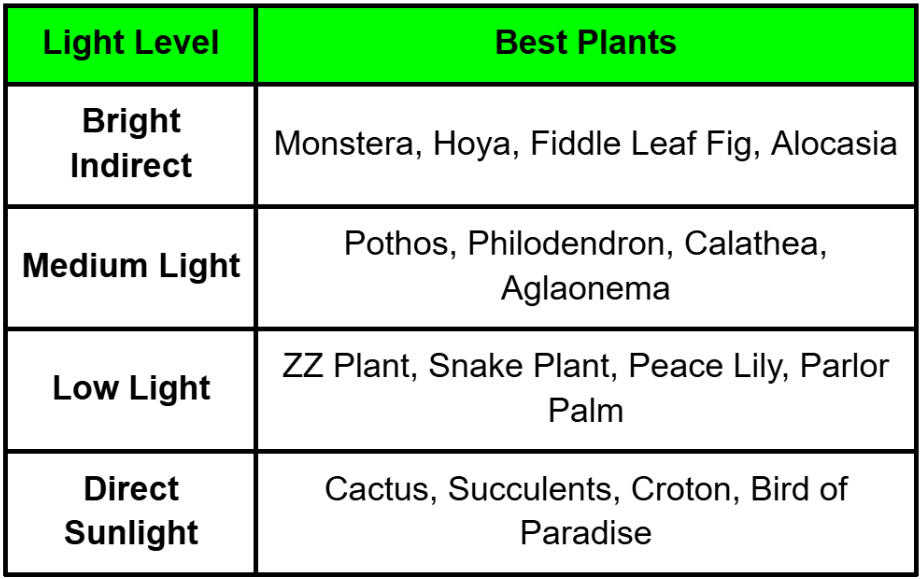

Fertilizing Basics
🌿Fertilizing Basics for Tropical Houseplants🌿
This post may contain affiliate links. If you buy through them, I may earn a commission at no extra cost to you.
How Often? What Kind?
Which Plants Are Heavy Feeders?Tropical houseplants are gorgeous, fast-growing, and vibrant—but all that growth requires fuel. That’s where fertilizer comes in. Just like humans need balanced meals, tropical plants need a steady supply of nutrients to maintain lush leaves, vibrant colors, and new growth. But not all plants eat the same, and too much of the wrong kind of fertilizer can do more harm than good.
This guide will walk you through how often to fertilize, which type of fertilizer works best for each plant family, and which of your plants are hungriest for nutrients.
🌱Why Fertilizing Matters🌱
Most potting soil contains a small nutrient reserve, but it’s quickly depleted—especially for tropicals in active growth phases. Fertilizer replaces these spent nutrients, delivering nitrogen (N), phosphorus (P), and potassium (K), as well as micronutrients like calcium, magnesium, and iron.
When done right, you’ll see:
Faster & fuller growth
Brighter & healthier foliage
More resistance to disease and pests
📅How Often Should You Fertilize?📅
Seasonal Fertilizing Frequency
Spring & Summer - Every 2–4 weeks (active growth)
Fall - Every 4–6 weeks or reduce dose
Winter (Dormant) - Stop or once every 6–8 weeks
Pro Tip: Always water your plant first, then fertilize. Fertilizing dry soil can lead to root burn.
🧬Fertilizer by Plant Family🧬
🌿Araceae (Philodendron, Monstera, Alocasia, Pothos, Anthurium)🌿
These are moderate to heavy feeders that like a balanced fertilizers with a bit of extra nitrogen.
Recommended Fertilizer:
✅ Dyna-Gro Grow 7-9-5 Liquid Plant Food – A cult favorite in the houseplant world for steady foliage growth.
Frequency: Every 2–4 weeks during growing season
Special Note: Alocasia and Anthurium love calcium and magnesium - consider adding Cal-Mag monthly.
✅ Botanicare Cal-Mag Plus
🌸Gesneriaceae (African Violet, Episcia)🌸
These bloomers need phosphorus for flowers and potassium for root health!
Recommended Fertilizer:
✅TPS NUTRIENTS African Violet Fertilizer – Great for flowering tropicals.
Frequency: Every 2–3 weeks during blooming phase
Special Note: Avoid foliar feeding—these plants dislike moisture on their leaves.
🍃Apocynaceae (Hoya)🍃
Hoyas are light feeders but bloom best with a high-phosphorus formula.
Recommended Fertilizer:
✅ Jack’s Classic Blossom Booster 10-30-20 2pk – Promotes stunning blooms.
Frequency: Monthly when not blooming; biweekly during bloom season.
Special Note: Flush soil every 6–8 weeks to avoid salt buildup.
🐍Marantaceae (Calathea, Prayer Plant, Stromanthe)🐍
These plants are sensitive to chemical buildup, so go gentle and use diluted feed.
Recommended Fertilizer:
✅ Espoma Organic Indoor Plant Food (2-2-2) – Gentle and organic.
Frequency: Every 3–4 weeks
Special Note: Use filtered or distilled water to avoid leaf damage.
🍃Piperaceae (Peperomia)🍃
These plants are low feeders—too much fertilizer can cause leaf burn or legginess.
Recommended Fertilizer:
✅ Liquidirt All-Purpose Plant Food – Very low risk of overfertilizing; great for beginners.
Frequency: Every 4–6 weeks
Special Note: Skip fertilizing in winter entirely.
🍂Outlier Family: Araliaceae (Schefflera, Dizygotheca)🍂
These need more potassium and can grow quickly with the right feeding.
Recommended Fertilizer:
✅ Schultz All Purpose Plant Food 10-15-10
Frequency: Every 2–3 weeks.
Special Note: Great option for faster bushy growth.
🧠Quick Tips for Fertilizing Success🧠
Less is more: Always start at half-strength if you're unsure.Observe your plant: Pale leaves? Might need nitrogen.
No new growth? Might need a boost.
Use slow-release fertilizer for convenience:
✅ Osmocote Smart-Release Plant Food – Lasts 3–4 months.
🪴Wrap-Up: Feed to Thrive__🪴
Fertilizing tropical houseplants isn’t one-size-fits-all. Each plant family has different needs—but when you match the right fertilizer with the right plant, you unlock their full potential. From glossy philodendron leaves to blooming hoyas and vibrantly striped calatheas, the results are well worth the effort.
Fertilizing Advanced

🌿Fertilizing Advanced🌿
🌿Feeding the Fussy🌿Additives & Special Care for Variegated Tropical Houseplants (Low-Chlorophyll Cultivars)
Some of the most breathtaking tropical houseplants aren’t just green—they’re marbled, speckled, or boldly white. Cultivars like Monstera albo, Monstera Thai Constellation, Philodendron White Knight, and Philodendron Pink Princess are absolute showstoppers. But beauty comes at a price—those pale or white leaf (pretty much anything except green) sections contain little to no chlorophyll, which means less photosynthesis and less energy production. This makes them more vulnerable to stalling, yellowing, sunburn, and root stress. Thankfully, the right nutrient strategy—plus a few carefully chosen additives—can support their growth and maintain those dreamy variegation patterns.
🌱Why Low-Chlorophyll Plants Need Extra Support🌱
Because these plants have reduced energy-making ability, they:
- Grow more slowly than their all-green counterparts
- Are more sensitive to environmental changes
- Are prone to leaf yellowing, especially in white sections
- May struggle with root rot or stunted roots due to slower nutrient uptakeThat’s why consistent micronutrient support, calcium-magnesium balance, and root-stimulant additives can make a world of difference.
💊Additives to Support Growth & Health💊1. Cal-Mag (Calcium + Magnesium Supplement)
These two nutrients help strengthen cell walls and assist with chlorophyll synthesis in the green parts of the plant—crucial for low-chlorophyll plants trying to photosynthesize more efficiently.
✅ Amazon Pick: Bloomcity Cal-Mag Pro – A favorite among aroid collectors.
Use: Once a month (or biweekly at half strength) during active growth
Pro Tip: Add Cal-Mag after watering—not on dry soil—to prevent root stress.
2. Silica (Si) Additive
Silica strengthens plant cell walls, helping support leaves and stems that may grow thin or weak due to slow development. It also improves resistance to pests and stress.
✅ Amazon Pick: General Hydroponics Armor Si
Use: Every 3–4 weeks in small doses
Pro Tip: Add to water before other nutrients for best absorption.
3. Root Stimulators & Beneficial Bacteria
Root boosters can help slow-growing plants develop a stronger underground system, improving nutrient uptake and overall health.
✅ Amazon Pick: Great White Mycorrhizae – High-quality blend of beneficial microbes.
Budget option: FoxFarm Bush Doctor Kangaroots
Use: Monthly root drench or add during repotting
Bonus: Helps prevent root rot and enhances soil biology.
4. Iron (Fe) Supplement
If your variegated plant’s green areas are looking pale or yellowing (especially in new growth), it may be due to iron deficiency, which is more common in low-chlorophyll plants.
✅ Amazon Pick: Liquinox Iron & Zinc Micronutrient Blend
Use: Every 6–8 weeks at half strength
Pro Tip: Especially useful for White Knight, Pink Princess, and Thai Constellation and other high varigation plants.
5. Seaweed/Kelp Extract
Seaweed contains natural growth hormones, minerals, and enzymes that stimulate healthy development, improve stress resistance, and even help with root recovery after shipping or repotting.
✅ Amazon Pick: Maxicrop Liquid Seaweed
Use: Every 3–4 weeks as a foliar spray or soil drench
Bonus: Helps boost sluggish variegated plants without overfeeding
🧠Best Practices for Low-Chlorophyll Cultivars🧠
Avoid Overfertilizing: These plants can't process high-nitrogen fertilizers as efficiently. Stick with low- to moderate-NPK formulas.
Rotate Regularly: Ensure even light exposure to prevent variegation fade or all-green reversion.
Provide Bright Indirect Light: Too little light = less energy; too much = leaf burn. Use sheer curtains or grow lights for balance.
Monitor New Leaves: Fully green leaves indicate low light or nutrient imbalance. Fully white leaves may be weak and short-lived.🌈Examples of Variegated VIPs🌈
Plants That Benefit from These Additives

🪴Wrap-Up: Baby Your Variegated Beauties🪴
These plants are some of the divas of the tropical houseplant world—but their dramatic beauty is worth the extra care. By incorporating key additives like Cal-Mag, silica, root stimulators & beneficial bacteria, iron and/or seaweed extract you can ensure these low-chlorophyll cultivars grow strong, stable, and strikingly beautiful.
The Truth About LECA, Perlite and Pumice

The Truth About:
LECA, Perlite, and Pumice
LECA, Perlite, and Pumice:
Pros, Cons, and How to Use Them for Happy Tropical PlantsWhen it comes to potting tropical houseplants, choosing the right substrate isn’t just about dirt — it’s about science. LECA, perlite, and pumice are three of the most commonly used materials to improve aeration, drainage, and root health. But they’re not interchangeable, and each has its own quirks. This guide breaks down the pros and cons of each, plus how (and when) to use them.
🪨What Is LECA?🪨
(Lightweight Expanded Clay Aggregate)
LECA consists of baked clay balls that are porous and lightweight. It's a favorite among hydroponic and semi-hydroponic growers.
✅ Pros:
- Excellent for root aeration
- Reduces the risk of root rot due to consistent moisture without saturation
- Reusable (sterilize between uses)
- Minimal mess❌ Cons:
- Not nutrient-rich — must supplement with hydroponic nutrients
- Requires monitoring of pH and EC (electrical conductivity)
- Not great for moisture-loving plants that prefer consistently damp soil
- Setup can be intimidating for beginners🪴Best Uses🪴
Semi-hydroponic setups
Great for Hoyas, Monsteras, and Philodendrons with mature root systemsHow to Use:
- Rinse thoroughly to remove clay dust.
- Soak for 24 hours before use.
- Use in a net pot or container with a reservoir (passive hydroponics).
- Add liquid nutrients to the reservoir.💡Recommended Products💡
LECA Clay Pebbles - 2L Bag
General Hydroponics Nutrient Trio+cal/mag
🌀 What Is Perlite?
Perlite is a white, puffy volcanic glass that's been heat-expanded. You’ve probably seen it already in most commercial potting soils.✅ Pros:
- Very lightweight and inexpensive
- Improves drainage and aeration
- Prevents soil compaction
- Inert and pH-neutral❌ Cons:
- Can float to the top of the soil
- Extremely dusty (wear a mask while handling)
- Not reusable
- Not aesthetically pleasing (can look artificial)🪴Best Uses🪴
- Mixed into soil to improve drainage
- Works well for Aroids, Alocasias, and general tropicals🔧How to Use🔧
1) Mix 10–30% perlite into your potting mix.
2) Use gloves and a mask to avoid inhaling dust.
3) Water thoroughly after repotting to help settle the perlite.💡Recommended Products💡
Miracle-Gro Perlite - 8qt
Espoma Organic Perlite - 8qt
🪨What Is Pumice🪨
Pumice is a naturally occurring volcanic rock that, like perlite, helps with aeration and drainage—but it’s heavier and more durable.
✅ Pros:
- Heavier than perlite, so it stays in place
- Does not break down over time
- Provides trace minerals like calcium and magnesium
- Natural-looking, blends well with other substrates❌ Cons:
- More expensive than perlite
- Heavier to ship and handle
- Not as readily available in big-box stores🪴Best Uses🪴
- High-quality chunky mixes for rare aroids and succulents
- Great for root-bound or overwatered plants🔧How to Use🔧
1) Add 15–30% pumice to your potting mix.
2) Can also be used alone in a very well-draining setup (for succulents).
3) Rinse before use to remove dust or debris.💡Recommended Products💡
Pumice - Fine
Pumice - Course
📊Side-by-Side Comparison📊

🌿Final Thoughts🌿
If you’re a beginner looking for easy drainage, perlite is a great place to start. Want something more natural and long-lasting? Try pumice. If you're ready to experiment with hydroponics and nutrient regimens, LECA is your go-to. Just remember—no matter the substrate, your plant’s needs come first.
Humidity Hacks

Humidity Hacks
🌿Indoor Plants🌿
Easy Ways to Boost Humidity Without Breaking the Bank
Tropical houseplants are beloved for their bold foliage, exotic growth patterns, and lush, jungle-like aesthetic. But bringing these beauties indoors means recreating a bit of the tropics - and that starts with humidity. Most tropical plants hail from rainforests, where humidity often ranges from 60% to 90%. Unfortunately, indoor environments (especially with AC or heat running) often hover around a much drier 30%–40%. This article will show you exactly how to bridge that gap—with simple, affordable solutions and no need for expensive gadgets.
🧪 Recommended Humidity Levels by Plant Family🧪
Knowing your plant’s native environment helps guide your care, especially when it comes to moisture in the air. Here’s a breakdown of the most common tropical plant families:
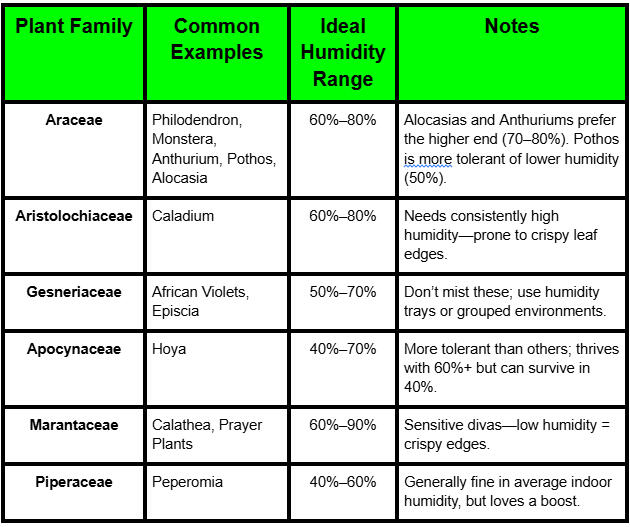
💨 Budget-Friendly Humidity Hacks1. Group Your Plants Together
Plants naturally release moisture through transpiration. When grouped, this creates a microclimate with elevated humidity around them.
Tip: Place humidity lovers like Alocasia or Calathea in the center of the group to benefit the most.
2. Use a Pebble Tray
Fill a shallow tray with water and pebbles, then place your plant pot (not sitting in water) on top. As the water evaporates, it increases humidity right around the plant.
✅ Amazon Item Suggestion:
Humidity Tray with Pebbles – Lightweight, reusable, and ideal for plant shelves.
3. DIY Mini Greenhouse
Clear plastic storage bins or glass domes can be transformed into a budget-friendly greenhouse. Just prop the lid slightly open for airflow or keep closed for close to 100% humidity.
✅ Amazon Item Suggestion:
Clear Stackable Storage Bins – Choose the size that fits your plant and pop the lid for airflow. The bins with gasketed lids are preferred for complete humidity control.
4. Place a Room Humidifier
Small ultrasonic humidifiers can add 10%–30% humidity to a room, especially if used near plants. Just be sure not to aim it directly at the leaves for long periods.
✅ Amazon Item Suggestion:
GoveeLife Smart Humidifiers 6L – Quiet, compact, and perfect for a plant corner.
Budget pick: GoveeLife Smart Humidifiers 3L
5. Decorate with Open Water
Place open bowls or vases of water around your plant shelf. As the water evaporates, it adds subtle humidity. Bonus: they double as aesthetic decor!
✅ Amazon Item Suggestion:
Glass Cylinder Vase Set – Add some river stones for a beautiful touch.
6. Dry Laundry Nearby (not perfect but...)
This might sound odd, but hanging damp clothes or towels near your plant area is a zero-cost way to raise the humidity by a few percentage points.
Perfect for winter when indoor air is extra dry!
7. Use a Misting Routine(With Caution)
Misting can temporarily boost humidity, but it’s best done in the morning and only for plants that like moisture on their leaves (like ferns and calatheas). Avoid misting plants prone to fungal issues or with fuzzy leaves (like African violets or peperomia).
✅ Amazon Item Suggestion:
Continuous Fine Mist Spray Bottle - Gives a salon-quality mist for even coverage.
🧠 Bonus Tips 🧠
Track Your Humidity! Knowing your baseline is the first step.
✅Digital Hygrometer 2-Pack - Inexpensive, reliable, and can be placed around different plant zones.Boost during winter or AC season. These are the driest times of the year, so consider rotating in higher humidity plants to kitchens or bathrooms where moisture lingers.
🌱 Final Thoughts 🌱
Raising humidity doesn’t have to mean buying an expensive greenhouse or industrial humidifier. Whether you go for a $10 misting bottle or group your plants for their own little rainforest club, small efforts go a long way toward lush, healthy foliage. Your philodendrons, hoyas, alocasias - and yes, even the finicky calatheas - will thank you.
DIY Tropical Plant Soil

🪴DIY Tropical Plant Soil🪴NOTE: It seems that every collector has their own specific mixture that they prefer to use. These are the ones that we prefer to use. Don’t be afraid to experiment with other mixes and develop your own.
🪴Aroids🪴
(For Monstera, Philodendron, Anthurium, Epipremnum, and Syngonium)
Aroids are beloved for their beautiful foliage and dramatic growth, but they also share a key trait underground—their roots thrive in loose, chunky, and well-aerated substrates. Native to rainforest floors and tree canopies, these plants hate sitting in soggy soil. The right mix helps avoid root rot, supports strong growth, and mimics their natural environment.🧪Recommended Aroid Soil Mix🧪
Classic Aroid Mix (Soil-Based):
40% High-quality potting soil (like Espoma Organic Potting Mix)
30% Orchid bark (fine to medium chunks)
15% Perlite or pumice
10% Coco coir (hydrates and adds moisture retention)
5% Activated charcoal (for odor & toxin control)
Optional Boosters:
A handful of worm castings or slow-release fertilizer granules (such as Osmocote)🪴Soilless Aroid Mix🪴
(Ideal for collectors or rarer cultivars)
40% Sphagnum moss (long fiber)
30% Fine-grade orchid bark
20% Perlite or pumice
10% Horticultural charcoal🌱 Ideal Plants for These Mixes🌱
Philodendron: Pink Princess, Gloriosum, White Knight, Micans, Brasil
Monstera: Deliciosa, Adansonii, Thai Constellation
Anthurium: Clarinervium, Crystallinum, Forgetii
Pothos / Epipremnum: Golden Pothos, Marble Queen, Cebu Blue
Syngonium: Podophyllum, Pink Splash, Confetti🛒 Where to Get Your Supplies 🛒Organic Potting Mix
Orchid Bark
Perlite
Coco Coir Bricks
Horticulture Charcoal
Long Fiber Sphagnum Moss
Worm Castings💡Pro Tips💡
Always pre-moisten your mix before potting up.
Mix in a large tub and store leftovers in a sealed container.
For rare aroids, err on the side of more aeration.
If your home is very humid, cut back on moisture-retaining ingredients like coco coir or moss.
🌱Hoyas🌱
For Hoya carnosa, pubicalyx, obovata, compacta, kerrii, linearis, and more
Hoyas—sometimes called “wax plants”—are epiphytic or semi-epiphytic climbers that hail from Southeast Asia and Australia. These tropical beauties love to stretch out their roots in open, airy mediums, not dense or soggy soil. A well-draining, semi-hydro mix is often ideal and can help these plants thrive and bloom.🧪Recommended Hoya Soil Mix🧪
Classic Hoya Mix (Soil-Based):
30% Cactus or succulent mix (or Espoma Cactus Mix)
30% Orchid bark (medium-grade)
20% Perlite or pumice
10% Coco coir or coconut chips
10% Horticultural charcoalThis mix retains a little moisture but prioritizes fast drainage—ideal for most carnosa and pubicalyx types.🫧Soilless Hoya Mix🫧
(Preferred for rare/hard-to-root varieties)
40% LECA or chunky perlite
30% Orchid bark
20% Sphagnum moss (or coco husk)
10% CharcoalThis is ideal for Hoya linearis, serpens, or cultivars like Hoya Callistophylla that are sensitive to overwatering. You can also root Hoyas directly in semi-hydro systems (like LECA) with nutrient water reservoirs and great results.🌱Hoyas That Love These Mixes🌱
Easy growers: Hoya carnosa, compacta, pubicalyx, krimson queen, tricolor
Rare types: Hoya linearis, curtisii, callistophylla, serpens, polyneura, deykei
Variegated forms: Krimson Princess, Variegated Wayetii🛒Where to Get Your Supplies🛒
(Amazon picks for easy shopping)
Espoma Cactus Mix
Orchid Bark
LECA Clay Pebbles
Perlite
Coconut Chips
Horticulture Charcoal
Long Fiber Sphagnum Moss💡Pro Tips💡
Don’t compact your Hoya mix—these roots love oxygen.
Use clear nursery pots so you can watch the root system and moisture level.
Fertilize lightly during the growing season for optimal blooms.
Let the soil dry out almost fully before watering, especially in winter.
Alocasias
For Alocasia Polly, Frydek, Maharani, Dragon Scale, Silver Dragon, and other jewel and elephant ear types
Alocasias are dramatic tropical plants prized for their striking leaves and sculptural form. But they’re also a bit notorious for being finicky — especially when it comes to their soil. The right mix can prevent root rot, promote healthy corm development, and support their preference for bright humidity without suffocating roots.🧪Recommended Alocasia Soil Mix🧪
Alocasia Chunky Moisture-Balanced Mix:
30% High-quality potting soil (FoxFarm or Happy Frog preferred)
25% Orchid bark (medium to fine grade)
20% Perlite (or pumice)
15% Coconut coir (or finely shredded coco chips)
10% Worm castings or compost
This blend strikes a balance between moisture retention and airflow, ideal for most Alocasia species, especially Polly and Amazonica.🌱Recommended Alocasia Soilless Mix 🌱
Corm or Jewel Varieties
(For Maharani, Silver Dragon, Cuprea, etc.)
40% Sphagnum moss (pre-soaked and fluffed)
30% Perlite
20% Coconut chips
10% Charcoal
This soilless mix is perfect for rooting Alocasia corms or supporting sensitive jewel varieties that dislike wet feet but still need humidity.Alocasias That Thrive in These Mixes
Common types: Alocasia Polly, Amazonica, Zebrina, Regal Shield
Jewel types: Silver Dragon, Dragon Scale, Maharani, Black Velvet
Large-leaf varieties: Odora, Portodora, Sarian, Macrorrhiza🛒Amazon Picks for the Perfect Mix🛒
FoxFarm Ocean Forest Potting Soil
Orchid Bark
Coarse Perlite
Coconut Coir Brick
Sphagnum Moss
Worm Castings
Horticultural Charcoal🪴Alocasia Soil Tips for Beginners🪴
Never let Alocasia sit in soggy soil – drainage is essential.
Water only when the top 2–3 inches of soil are dry.
If your home is dry, consider adding moss around the base or placing the pot on a pebble tray.
These plants love heat and humidity—aim for 60%+ and warm temps.
In winter, reduce watering and expect some leaf drop (dormancy is normal).
Seasonal Tropical Plant Care Checklist

Blog Text Body
Comprehensive Anthurium Care
and
Propagation Guide
With 3 Bonuses

Comprehensive Anthurium Care & Propagation Guide
1. Overview of Anthuriums
Anthuriums, often referred to as "Flamingo Flowers" or "Painter’s Palette," are tropical plants celebrated for their vibrant, glossy spathes and exotic foliage. They belong to the Araceae family, which also includes philodendrons and alocasias, and are prized both as ornamental houseplants and as cut flowers in floral arrangements. With their bold shapes and colors, anthuriums add a dramatic tropical flair to any collection.
Native to the rainforests of Central and South America - particularly Colombia, Ecuador, and Panama - anthuriums have adapted to warm, humid, and filtered light environments. In the wild, many species grow epiphytically, clinging to trees and absorbing moisture from the air, though others are terrestrial or lithophytic. The genus includes over 1,000 recognized species, ranging from the well-known Anthurium andraeanum, cultivated primarily for its flowers, to velvet-leaved foliage types like Anthurium crystallinum, warocqueanum, and papillilaminum, which are coveted by collectors.
Whether grown for their flowers or foliage, anthuriums are appreciated for their year-round appeal, their relatively long blooming cycles, and their increasingly diverse hybridization potential. As interest in rare houseplants has grown, so too has the popularity of anthuriums—transforming them from simple gift-shop novelties into stars of the tropical plant world.
2. Light Requirements
Anthuriums thrive best in bright, indirect light, which closely mimics the dappled sunlight they receive in their natural rainforest habitat beneath a canopy of trees. Direct sunlight, especially through uncovered south-facing windows, can easily scorch their delicate leaves, causing browning, dryness, or even permanent damage. On the other hand, placing anthuriums in overly shaded areas—such as dark corners or rooms with limited natural light—can result in slow growth, elongated stems, and little to no flowering.
For optimal growth, a spot near an east- or west-facing window with filtered sunlight works well. Sheer curtains, frosted glass, or diffused grow lights can also help maintain the ideal lighting balance. Leafy, dark green varieties (like A. warocqueanum or A. magnificum) can typically tolerate slightly lower light conditions, though their growth may slow. In contrast, variegated or lighter-colored varieties need higher light levels to maintain their coloration and stay compact. Without sufficient light, variegation may fade or disappear altogether.Signs of Poor Lighting Conditions:
Yellowing Leaves: This can indicate either insufficient light or light that’s too harsh. If leaves appear sunburned or crispy, reduce exposure to direct sun.
Leggy or Elongated Stems: A clear sign the plant is stretching toward the light, often due to a dim environment.
Lack of Flowers: Anthuriums grown for their blooms, such as A. andraeanum, require adequate light to consistently produce inflorescences.
If natural light is lacking, full-spectrum grow lights (set on a 10 – 12 hour cycle) can supplement effectively, especially in winter months or indoor environments with limited window access. Sansi and Barrina are our most recommended brands.
3. Watering Needs
Anthuriums prefer consistently moist - but never soggy - soil. A good rule of thumb is to water when the top 1–2 inches of the potting mix feels dry to the touch. These tropical plants originate from humid rainforest conditions where their roots are exposed to regular moisture and airflow, not stagnant or oversaturated soil. Overwatering is one of the most common causes of root rot and yellowing leaves, so it’s better to err slightly on the dry side than to keep the plant constantly wet.
During the active growing season (typically spring through early fall), anthuriums may require more frequent watering, especially if kept in a warm environment or a loose, chunky substrate. In cooler months or when growth slows, reduce watering to match the plant’s decreased metabolic needs. Always ensure your pot has good drainage - standing water at the bottom of the container can quickly lead to problems, even if you're watering on schedule.Pro Tip:
Anthuriums can be sensitive to the chemicals commonly found in tap water, especially chlorine, chloramine, and fluoride. Over time, these substances can cause browning on leaf tips and slow overall growth. To protect your plant, use filtered, distilled, or collected rainwater whenever possible. Letting tap water sit out overnight can also help some of the chlorine dissipate. If you want to learn more about water quality, check out our blog post on it!!Extra Tip for Humidity Lovers:
While soil moisture is important, so is atmospheric humidity. If your anthurium’s leaves start to curl or develop dry edges, it may be a sign that the air is too dry—even if you’re watering correctly. Use a humidifier, humidity tray, or group plants together to create a more favorable environment. Here is a link to our blog on Humidity Hacking.
4. Humidity & Temperature
Anthuriums are native to the warm, humid rainforests of Central and South America, so they naturally thrive in environments with humidity levels between 60–80%. In the average home, humidity often falls below this range—especially during winter months when heaters are running—which can lead to crisping leaf edges, reduced growth, or stalled flowering. Increasing humidity around your plant is one of the most effective ways to keep it looking lush and healthy.
Several easy methods can help boost humidity levels. Placing your anthurium on a pebble tray filled with water, grouping it near other tropical plants, or running a cool-mist humidifier nearby can make a significant difference. While occasional misting may provide a temporary boost, it doesn't create sustained humidity and can increase the risk of fungal issues on leaves if done too often or in poor airflow. Still, misting can be useful in moderation, especially on hot days or to clean dust off foliage.
In terms of temperature, anthuriums prefer a steady range between 65–80°F (18–27°C). These plants are not cold-tolerant and should be kept away from drafty windows, air conditioners, or any area where temperatures may drop below 55°F (13°C). Sudden temperature swings can cause shock, leaf drop, or stunted growth. Maintaining consistent warmth and humidity mimics their natural environment and supports long-term vitality.
If you're growing your anthurium outdoors in warm months, make sure to bring it inside well before temperatures begin to dip in fall. Likewise, avoid placing them near heating vents or radiators, which dry out both the air and the plant.
Optimal humidity: 60–80%
Ideal temperature range: 65–80°F (18–27°C)
A combination temperature and humidity gauge makes it much easier and safer to track and measure both parameters.
5. Soil & Potting Mix
Anthuriums are epiphytic or semi-epiphytic in nature, meaning they often grow on trees or rocky surfaces in the wild rather than in dense soil. Because of this, they thrive in an airy, chunky, and well-draining potting mix that allows oxygen to reach the roots while still retaining some moisture. A dense or compacted soil will quickly lead to problems like root rot, fungus gnats, and slowed growth.
The ideal anthurium substrate mimics conditions found in their natural rainforest habitat: loose, breathable, and rich in organic matter. Think of it more as a “root support system” than traditional soil. You’ll often hear growers refer to “aroid mixes,” which are blends designed for plants in the Araceae family—Anthuriums, Philodendrons, and Monsteras included.
Suggested Mix for Anthuriums:
Classic Aroid Mix (Soil-Based):
40% High-quality potting soil (like Espoma Organic Potting Mix)
30% Orchid bark (fine to medium chunks)
15% Perlite or pumice
10% Coco coir (hydrates and adds moisture retention)
5% Activated charcoal (for odor & toxin control)
Classic Aroid Mix (Soilless):
40% Sphagnum moss (long fiber)
30% Fine-grade orchid bark
20% Perlite or pumice
10% Horticultural charcoal
Optional Boosters for either mixture:
Worm castings or slow-release fertilizer granules (such as Osmocote)
When repotting, always choose a pot with drainage holes and size up only slightly—too large a container can trap excess moisture and overwhelm the roots.
6. Fertilizing
To keep your anthurium healthy and thriving, regular fertilization during the growing season is key. These plants are not heavy feeders, but they do benefit from a consistent, balanced nutrient supply to support lush foliage and, in some varieties, flower production. The active growth period typically spans from spring through early fall, when warmth and light levels encourage the plant to put out new leaves and roots.
A liquid fertilizer is usually best, as it allows for easy dilution and even nutrient distribution. Apply fertilizer every 2 to 4 weeks during this time, depending on your plant’s size, light exposure, and growth rate. Always follow the product’s dilution instructions - or go slightly weaker than the recommended dose to avoid salt buildup in the soil.
Check out our blogs on Fertilizing Basics and Advanced Fertilizing options.Recommended Fertilizer:
✅ Dyna-Gro Grow 7-9-5 Liquid Plant Food - A favorite among aroid collectors, this well-balanced formula encourages steady, even growth without overwhelming the plant. It includes micronutrients and is especially effective for foliage-heavy species like A. crystallinum or A. magnificum.Special Nutrient Note:
Anthuriums particularly love calcium and magnesium, which help support strong cell walls, root health, and overall vigor. These nutrients are often overlooked in basic fertilizers, so consider adding a Cal-Mag supplement once a month to round out their nutritional profile.
✅ Botanicare Cal-Mag Plus - A trusted go-to among tropical plant growers, especially when using RO or distilled water, which can lack essential minerals.Winter Pause:
Avoid fertilizing in the winter months when your anthurium naturally slows down. Feeding during dormancy can lead to salt buildup, root damage, or weak, leggy growth. Resume your regular fertilization schedule once spring returns and new leaves begin to emerge.
7. Common Problems & Solutions
Even with the best care, anthuriums can occasionally show signs of stress. Learning to spot early warning signs and knowing how to respond can make all the difference in keeping your plant healthy and thriving. Here are the most common issues anthurium growers face - and how to fix them:Brown Leaf Tips
Usually caused by low humidity, dry indoor air, or salt buildup from overfertilizing. If the air is dry (especially in winter), increase humidity using a humidifier or humidity tray. If you're fertilizing regularly, flush the soil every 1–2 months with plain water to wash out excess salts. Also check your water quality - tap water high in chlorine or fluoride can contribute to this issue.Yellow Leaves
Most often a sign of overwatering or inadequate light. Check if the soil is staying wet for too long—if so, reduce watering and make sure the pot has proper drainage. If the plant is sitting in a dim area, move it to a brighter spot with indirect light. Yellowing older leaves near the base are normal with age, but widespread yellowing should be addressed.No Blooms or Inflo
If your anthurium isn’t flowering or producing inflo, it may not be getting enough light or nutrients. Flowering varieties like Anthurium andraeanum need bright, indirect light and consistent feeding to produce their signature spathes. Try increasing light exposure and resume or adjust your fertilizing routine - especially using a bloom-supportive fertilizer during the growing season.Pest Issues
Common offenders include mealybugs, spider mites, and aphids, all of which can stunt growth or damage foliage. Inspect your plant regularly, especially the undersides of leaves and at stem joints. If pests are spotted, isolate the plant and treat using neem oil, insecticidal soap, or a rubbing alcohol/water mix. For persistent infestations, repeat treatments weekly and improve airflow around your plant to discourage future outbreaks.Proactive care - like wiping leaves clean, monitoring watering, and checking for pests - goes a long way in preventing problems before they start.
8. Propagation Methods
Anthuriums can be propagated through several methods, depending on the plant's maturity, your experience level, and the goal of the propagation (cloning, multiplying, or experimenting with hybrids). Each method has its own advantages and best-use scenarios.A. Division
One of the simplest and most beginner-friendly methods, division involves separating a mature plant that has produced pups (also known as offsets or side shoots). These smaller growths typically emerge from the base of the mother plant and develop their own root systems over time. Once the pup has a few healthy roots and at least one or two leaves, it can be gently separated—either by pulling or cutting it away with sterile shears—and potted into its own container.
This method ensures an exact genetic clone of the parent plant, making it ideal for preserving prized traits like rare variegation or leaf form. Division works best when repotting or refreshing the soil, as the root system is already exposed.B. Stem Cuttings
Another popular method is propagating through stem cuttings, especially with climbing anthurium species. Look for a visible node—a small bump or ring on the stem—accompanied by an aerial root. Using a clean, sharp tool, take a cutting that includes at least one node and preferably a healthy aerial root or growing eye.
You can root stem cuttings in sphagnum moss, a chunky aroid mix, or even perlite. High humidity (60–80%) and warmth will encourage faster rooting. Place the cutting in a clear container or humidity dome to maintain moisture and visibility. In a few weeks, new root growth should emerge, followed by a fresh leaf once it’s established.C. Tissue Culture (TC)
Tissue culture is an advanced propagation method where tiny pieces of plant tissue are grown in sterile, nutrient-rich media inside lab conditions. Many collectors buy Anthuriums in tissue culture—often still sealed in jars or small boxes—especially rarer hybrids or wild types that are difficult to find or afford in mature form.
When working with TC plants, acclimation is critical. These plants are extremely sensitive to changes in humidity, airflow, and light. Start by placing them in a high-humidity dome or enclosed container planted in a mixture of Fluval Stratum and fine perlite or a brownie plug and gradually increase ventilation over a period of days to weeks. Too much airflow too soon can dry out or kill the plant, while too little light may stall growth. Once the plant hardens off and begins pushing new growth, you can pot it into a standard mix and begin treating it like a mature seedling.
Tissue culture allows for mass production and disease-free propagation, but patience and a careful hand are essential for success.
9. Advanced Techniques
For enthusiasts looking to deepen their connection with anthuriums, techniques like hand pollination, hybridization, and seed germination offer a rewarding way to explore the full life cycle of these fascinating plants. Whether you’re trying to create your own unique cross or simply propagate from seed, these advanced methods require patience, attention to detail, and a bit of botanical curiosity.Pollination & Crossbreeding
Anthuriums produce an inflorescence made up of a spadix and spathe, and their flowers follow a unique sequential blooming pattern: the female phase comes first, followed by the male phase. To successfully pollinate, you’ll need two inflorescences at compatible stages.
Use a soft brush, cotton swab, or fine tweezers to collect pollen from the mature male phase (you’ll usually see white or yellow powder on the spadix). Gently dab the pollen onto the sticky surface of the female-phase spadix on another plant—or even the same one, in the case of self-pollination.
Label every cross carefully with parent names and dates. This is especially important when working with complex hybrids or trying to track traits like leaf shape, size, or variegation. After successful pollination, tiny berries will begin to swell on the spadix. Fruit development can take several months, often 4–6 months or more, before fully ripening into small, soft, berry-like structures that contain seeds.Seed Germination
Once the fruit is ripe (usually soft, plump, and easily removed), carefully extract the seeds, rinse away any pulp with clean water, and sow them immediately - anthurium seeds don’t store well and lose viability quickly. Place seeds on moist sphagnum moss, seed-starting mix, or a light aroid blend (see above), spacing them out so roots and leaves have room to grow.
Maintain high humidity (around 80%) and warmth (75–80°F / 24–27°C) using a propagation dome, ziplock container, or mini greenhouse setup. Good airflow is essential to prevent mold, but the environment should stay evenly humid and warm at all times. Germination typically occurs within 1–3 weeks, with small roots and cotyledons emerging first. Leaf development will follow soon after.
Growing anthuriums from seed is a slow but incredibly satisfying process. It can take several years for seedlings to mature and reveal their final form—but the possibility of discovering a brand-new phenotype or hybrid is part of the thrill.
10. Sourcing Supplies
Using the right supplies makes all the difference in the health and success of your anthuriums. Whether you're potting up a new plant, starting seeds, or acclimating tissue cultures, investing in quality materials ensures better growth, fewer setbacks, and a smoother overall experience. Below are some trusted sources for essential supplies—used and recommended by collectors and growers in the aroid community:
Orchid Bark - A key component of any chunky aroid mix, orchid bark provides structure and airflow to prevent root rot.Perlite - These lightweight additives improve drainage and prevent your mix from becoming compacted over time.Sphagnum Moss - Ideal for rooting stem cuttings, germinating seeds, or transitioning tissue culture plants. Choose long-fibered, clean moss for best results.Grow Lights and Humidifiers - Consistent lighting and ambient humidity are crucial for lush foliage and strong roots, especially in indoor setups.
Tissue Cultures – For adventurous growers, tissue culture plants offer access to rare hybrids and species at a more affordable price - just be ready to acclimate them slowly.
11. Conclusion
Anthuriums are more than just eye-catching tropical plants - they’re living works of art that can bring bold texture, color, and elegance to any indoor space. From velvety foliage to striking inflorescences, each variety offers its own unique charm. While they may seem a bit particular at first, these plants are surprisingly adaptable once you dial in their preferred conditions.
By providing the right balance of light, humidity, soil, and nutrition, and learning to respond to their signals, you’ll be well on your way to growing happy, healthy anthuriums. Whether you’re nurturing a single prized specimen or diving into advanced techniques like crossbreeding and tissue culture, there’s always more to discover with these fascinating members of the aroid family.
With a bit of patience, attention, and a touch of curiosity, anthuriums will reward you with lush growth, captivating foliage, and the satisfaction of mastering one of the plant world’s most stunning genera. Happy growing - and don’t be afraid to experiment, learn, and share your journey with the ever-growing community of anthurium lovers.
BONUS #1
Parts of an Anthurium
(Infographics)


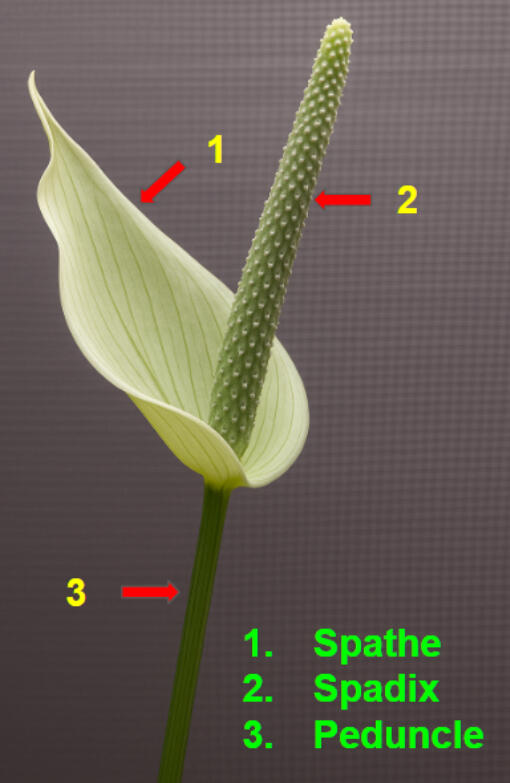
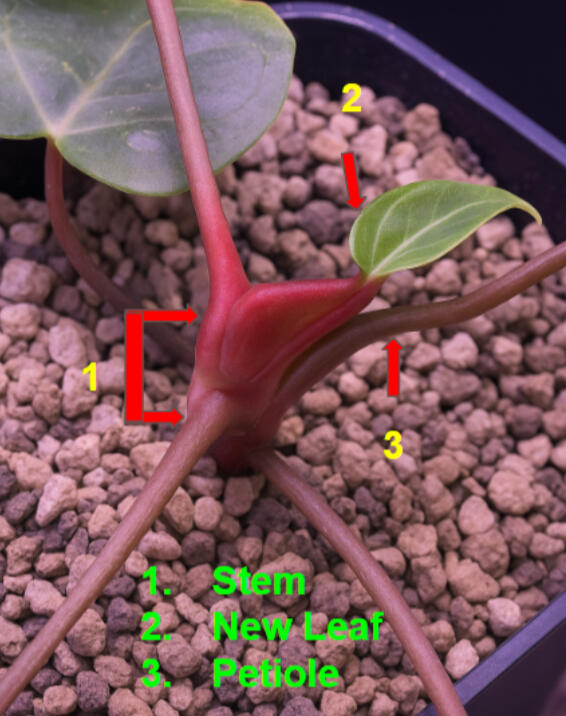
Bonus #2Common Anthurium Terminology
Clone
An individual plant produced asexually—by division, tissue culture, or cuttings—so that its genetic makeup is identical to the “mother.” Cloning ensures that any desirable traits (variegation pattern, leaf shape, growth rate) are faithfully preserved.
Keep in mind that a clone is not the same as a “selfed” plant.
Offset
Also called a “pup,” an offset of the mother plant that forms at the base of the parent. In Anthuriums, once the offset develops its own roots, you can separate and pot it on its own to produce a new, genetically identical specimen.This is sometimes referred to as division.
× self (Selfed)
A cross in which pollen from a flower is used to fertilize the ovules of the same plant. Selfing in Anthuriums yields seed-grown offspring that tend to be more uniform than other sexual reproduction methods crossing other cultivars. Keep in mind that “selfed” seedlings do not always resemble the parent.
Blister Variegation
A rare type of variegation characterized by small, bubble-like patches of lighter tissue (often creamy white or pale yellow) on the leaf surface. In Anthuriums, these “blisters” result from somatic mutations that disrupt chlorophyll distribution in localized spots.
Filial Generations (F1, F2, F3, etc.)
Filial generations refer to the offspring produced through breeding, especially in controlled plant hybridization. Each generation is labeled with an “F” followed by a number, indicating its place in the lineage:F1 (First Filial Generation): The direct offspring from crossing two genetically distinct parent plants. F1 plants often show hybrid vigor - strong growth and desirable traits - but tend to be uniform.F2 (Second Filial Generation): Produced by selfing or interbreeding F1 plants. F2s show much more genetic variation, with a wide range of traits that may resemble either parent or a mix.F3, F4, F5, etc.: Each subsequent generation comes from selective breeding within the previous generation, often to stabilize specific traits like leaf shape, color, or growth habit. As filial numbers increase, plants generally become more genetically consistent but can lose hybrid vigor.In anthurium breeding, filial generations are crucial for tracking how traits are passed down and for selecting standout seedlings from a genetically diverse group.
Open-Pollinated
Seed produced when pollination occurs naturally (by insect, hand-rub, or wind) without controlled parentage. This can also be used when you may just be uncertain of the parents makeup or from an unknown hybrid. Offspring generally resembles the mother plant but can show wider variation since the pollen source is unknown.
Bench Hybrid
A deliberate, controlled cross made by a breeder—usually on a greenhouse “bench.” Pollen is hand-transferred from one selected parent to another to combine specific traits, then seeds are harvested and grown out. “Bench” is often used when the sexual crossing of the anthurium is not done in a controlled environment but is done in a greenhouse or “bench” where other pollen could possibly be involved as well.
NOID
Short for “no identification” or “NO ID”. A plant (or seedling) lacking a registered name or known lineage. Among Anthurium hobbyists, NOIDs may be unnamed seedlings or sports awaiting classification, lost tags or a multitude of other reasons.
Ecotype
A naturally occurring population of a species adapted to a particular locale or microclimate. Different Anthurium ecotypes (e.g., from Costa Rica vs. Ecuador) may show distinct leaf shapes, sizes, or tolerances can also be referred to as a “subspecies”.
Germination
The process by which a seed resumes growth and sprouts into a seedling. For Anthuriums, optimal germination often requires warm temperatures (75–85 °F), high humidity, and a fine, well-draining seed medium.
Community Pot
A single container in which many seedlings (often from the same cross) are grown together. In Anthuriums, community pots encourage upright growth and can be pricked out later—plus they look lush and full while you’re evaluating seedlings. ~Note: Do your sanity a favor and separate the seedlings before the roots become too intertwined.
Cataphyll Growth (“in cataphyll”)
Cataphylls are the papery sheath-leaves that enclose and protect a developing leaf or inflorescence. When you see new growth “in cataphyll,” it means the emerging leaf or spike is still partly wrapped in its protective covering.
Inflorescence (“inflo”)
The reproductive structure of an anthurium., composed of a usually colorful spathe (a modified leaf) surrounding a spadix (the central stalk bearing tiny true flowers). Growers often abbreviate it as “inflo.”
Spadix
The spadix is the central, finger-like spike found at the center of the spathe. It’s actually a dense cluster of tiny true flowers, arranged along the spike. Anthurium flowers bloom in phases - female first, then male - which is why understanding the spadix is key for successful hand pollination and hybridization.
Aerial Root
An aerial root is a root that grows above the soil line, typically along the stem or at nodes. In the wild, these roots help anthuriums anchor themselves to trees and absorb moisture and nutrients from the humid air. Indoors, aerial roots often signal a healthy, actively growing plant and can assist in propagation when included in cuttings.
Variegation
Variegation refers to irregular patches or patterns of color on a leaf - often white, cream, yellow, or pink - caused by the absence or reduction of chlorophyll in certain areas. While beautiful and often highly sought-after, variegated anthuriums generally require brighter light to maintain their coloring, as they have less surface area for photosynthesis.
Node
A node is a small, slightly raised or ringed area on the stem where leaves, roots, or new growth can emerge. Nodes are essential in propagation—any successful cutting must include at least one node, as it’s the growth point that generates new roots and shoots. Without a node, a cutting cannot develop into a new plant.
Bonus #3
Common Anthurium Naming Nomenclature & DefinitionsDF
Dewey Fisk (collector/source) and also used to mean “Dark Form” or “Delta Force”
sp. nov “DF”
Literally “species nova Dewey Fisk” – a temporary placeholder for an undescribed new species collected by Dewey Fisk.
papillilaminum FS or just FS
“Fort Sherman” – a classic wild‐collected A. papillilaminum clone from Jay Vannini’s Fort Sherman site.
papillilaminum RL or just RL
“Ralph Lynam” pap clone; a wild A. papillilaminum clone introduced by Jay Vannini.
RL
Ralph Lynam pap clone (from Jay Vannini)
RLFS, FSRL, RL × FS, FS × RL
Any combination of RL and FS denotes the cross between the Ralph Lynam and Fort Sherman clones (RL × FS = RL seed parent × FS pollen parent; FS × RL vice versa).
RC
“Red Crystallinum” or just “Red Crystal” – a red‐veined form of A. crystallinum.
AOS
“Ace of Spades” – a dark, spade-shaped hybrid of uncertain parentage.
DP
“Dark Phoenix” – an A. papillilaminum × A. dressleri hybrid originally from Indonesia.
CP
“Circus Peanuts” – a dressleri × leucostachyum hybrid nicknamed for its candy-sweet inflorescence odor.
FTG (FTG crystallinum)
A crystallinum hybrid originating from Fairchild Tropical Gardens.
NSE
Plants grown by NSE Tropicals (Enid Offolter’s Florida nursery).
SKG
Plants grown by Silver Krome Gardens in Florida.
Tezula
Plants grown by Tezula Plants in Florida.
KOS or HU
“King of Spades” or “Haji Uli” – an Indonesian hybrid by breeder Haji Uli, sometimes notated just as (HU) as well.
TALL
“Tim Anderson Long Leaf” – a long-leaf hybrid introduced by Tim Anderson, often in TALL “A” and TALL “B” forms.
papillilaminum L × LB or just LB
“Long × Long Bullet” – a form of papillilaminum with especially elongated leaves.
Novelty Ace or Novelty AOS
A plant sold by @noveltyg on eBay as “Ace of Spades” - not a true AOS but similar in appearance.
RA1, RA2, RA3…
Numbered wild papillilaminum clones sold by Rory Antolak (“RA”).
RA
Any plant sourced or sold by Rory Antolak (source of many wild-collected clones)
Dressleri RG
“Río Guanche” – an ecotype of A. dressleri from Río Guanche, Panama, prized for its near-black leaves.
Indo dressleri
A NOID (no-ID) anthurium from Indonesia sold under the name dressleri - NOT true A. dressleri.
“Windy” dressleri
A form of A. dressleri grown by Windy Aubrey, likely derived from the RG clone but sold under her name.
OG1, OG2, OG3…
Wild A. carlablackiae clones numbered by Scott Cohen (originally sourced from Rory Antolak).
SC1, SC2, SC3…
Numbered papillilaminum clones sold by Scott Cohen (“SC”).
Wu1, Wu2, Wu3…
Select lines of various species (e.g. crystallinum, papillilaminum, carlablackiae) produced by Wuhoo Tropicals in Texas.
GPH
Juan (aka @GayPlantHeaux) personal cataloguing notation for his clone codes for his A. carlablackiae mother plants - most famously GPH001
KOC
“King of Clarinervium,” an unnamed Indonesian A. clarinervium hybrid or sport
JV
Jay Vannini - CA grower/breeder renowned for line-breeding A. dressleri (Rio Guanche ecotype)
PM
Paul Marcellini from Understory Oasis (South Florida); especially known for his A. kunayalense lines
RF
Round × Felix F₁ cross - a family of hold-backs/breeding lines (e.g. RF1, RF2)
RVDP
“Red Vein Dark Phoenix,” a Thailand hybrid similar ro the Dark Phoenix but with red venation
BVEP
Black Velvet Eastern Panama (now A. antolakii)
RG
Río Guanche ecotype of A. dressleri (aka Ree Gardens)
BLOG POST TITLE

Blog Text Body
BLOG POST TITLE

Blog Text Body
BLOG POST TITLE

Blog Text Body
BLOG POST TITLE

Blog Text Body
BLOG POST TITLE

Blog Text Body
BLOG POST TITLE

Blog Text Body
About Us
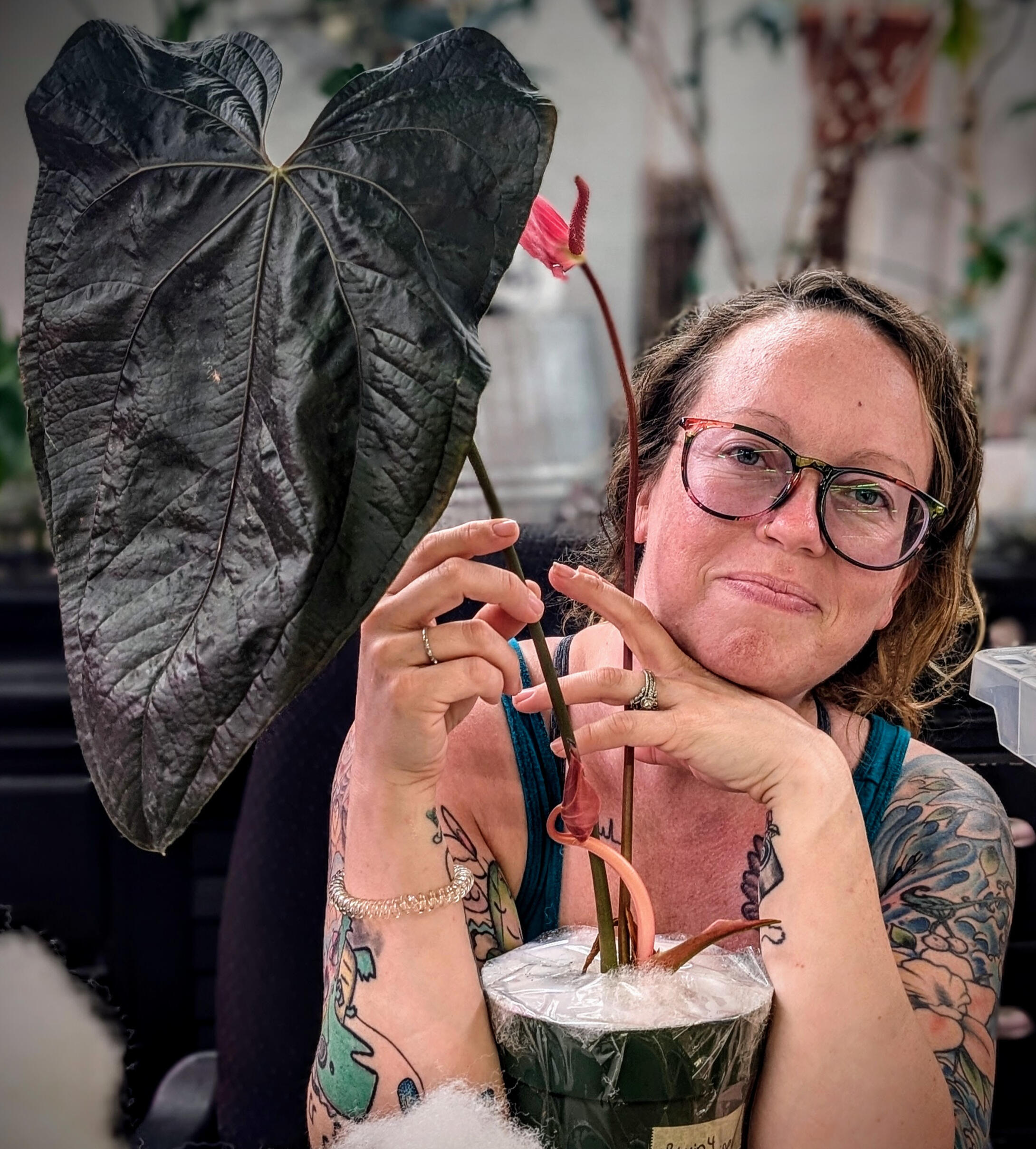
Natalie Rudolph - Founder and Green Thumb Pro
Hi, I’m Natalie - tropical plant addict, collector of over 600 leafy roommates, and co-founder of BeLeafInRudolph with my husband, Richard. What started as “just one more plant” turned into a full-blown jungle, and now I spend my days surrounded by rare foliage, quirky plant projects, and way too many grow lights.I’ve been collecting, caring for, and learning about tropical plants for years, and nothing makes me happier than sharing that love with others. Whether I’m selling you your dream plant, teaching you the tricks I’ve picked up through trial (and plenty of error), or just swapping planty dad jokes, I’m all in. Plants are my passion, but people are my purpose - I truly love connecting with fellow collectors, beginners, and curious green thumbs alike.At BeLeafInRudolph, I bring my humor, my heart, and my (sometimes overly honest) plant wisdom to the table. If you’re looking for someone who takes tropical plants seriously - but doesn’t take herself too seriously - then welcome, you’ve found your planty people.

Richard Rudolph - (Self proclaimed) Other Person Involved
Meet Richard - my husband, my rock, and the other half of BeLeafInRudolph. While I was knee-deep in potting mix and plant cuttings long before he joined me, Richard’s love for plants has grown right alongside mine. He didn’t start out obsessed with greenery (someone had to be the voice of reason when 600+ plants started showing up around the house), but over time he’s developed a true appreciation for the hobby - even claiming Alocasias as his personal favorites.Richard is our in-house nerd and research guru. If there’s a plant care method, growth hack, or obscure botanical fact to be found, he’s the one digging deep to uncover it. He balances out my wild enthusiasm with his steady support, thoughtful insights, and just the right amount of dry humor. Together, we make a team that’s passionate about not just growing plants, but also growing a community of plant lovers who can share in the joy.So whether he’s geeking out over plant science or carrying the heavy bags of soil (true love, right?), Richard is a big part of why BeLeafInRudolph exists today.

Our little family!!



Socials
Join us on PalmStreet for our next LIVE chat, auction, and FREE giveaways!October 20 @ 5:30 EST